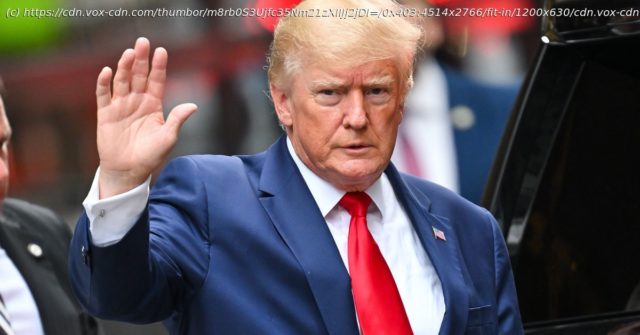The heavily redacted document reveals potential obstruction claims against Trump.
An affidavit released Friday presenting evidence for the FBI’s search of former President Donald Trump’s Mar-a-Lago residence, while heavily redacted, indicates that Trump had highly protected information about human intelligence gathering — and that the agency had reason to believe that he was attempting to obstruct the investigation into the records.
The 38-page affidavit was written to support the government’s request for the search warrant executed August 8 and gives more insight into the timeline of events leading up to the search. The Justice Department made the search warrant public on August 12; that document indicated that the search was in support of an investigation into Trump under the Espionage Act, as well as two other federal statutes — obstruction of justice and destroying or concealing federal records.
Though the affidavit is heavily redacted in order to preserve the investigation and protect the identities of witnesses, it still provides new information. Crucially, the affidavit states that within the 15 boxes of documents returned to the National Archives in January of this year, there were “184 unique documents bearing classification markings, including 67 documents marked as CONFIDENTIAL, 92 documents marked as SECRET, and 25 documents marked as TOP SECRET.”
Some of those documents, the affidavit indicates, could contain extremely sensitive information about intelligence gathering activities, potentially compromising information about the identities of foreign nationals who spy for the US, and about information intercepted from foreign intelligence.
A memo justifying the redactions to the affidavit also indicates that “a significant number of civilian witnesses” are cooperating in the investigation; the redactions, according to the memo, protect their “safety and privacy” in addition to that of “law enforcement personnel, as well as to protect the integrity of the ongoing investigation.” In court proceedings to determine whether and how much of the affidavit to release, the court sided with the government, ruling that releasing significant portions of the affidavit would subject the investigation to possible obstruction and threats, citing probable cause to believe that obstruction had already occurred, as well as increased threats against FBI personnel since the August 8 search. The burden of evidence for executing the warrant
An affidavit is not an indictment; its purpose is merely to establish probable cause to execute the search warrant. The affidavit itself makes that clear, saying, “it does not set forth each and every fact” that the investigation has uncovered in the investigation so far. The purpose of the affidavit is only to meet a reasonable threshold to justify the search of the former president’s home.
Much of that evidence is still under seal, but, as a letter dated May 10 from acting US archivist Debra Steidel Wall to Trump’s attorney Evan Corcoran indicates, the 15 boxes the government retrieved in January contained hundreds of pages of documents with classified markings, up to the level of Special Access Program security protocols which heavily restrict access to some of the government’s most sensitive information. Those documents were intermingled with “newspapers, magazines, printed news articles, photos, miscellaneous print-outs, notes, presidential correspondence, [and] personal and post-presidential records,” according to the affidavit.






